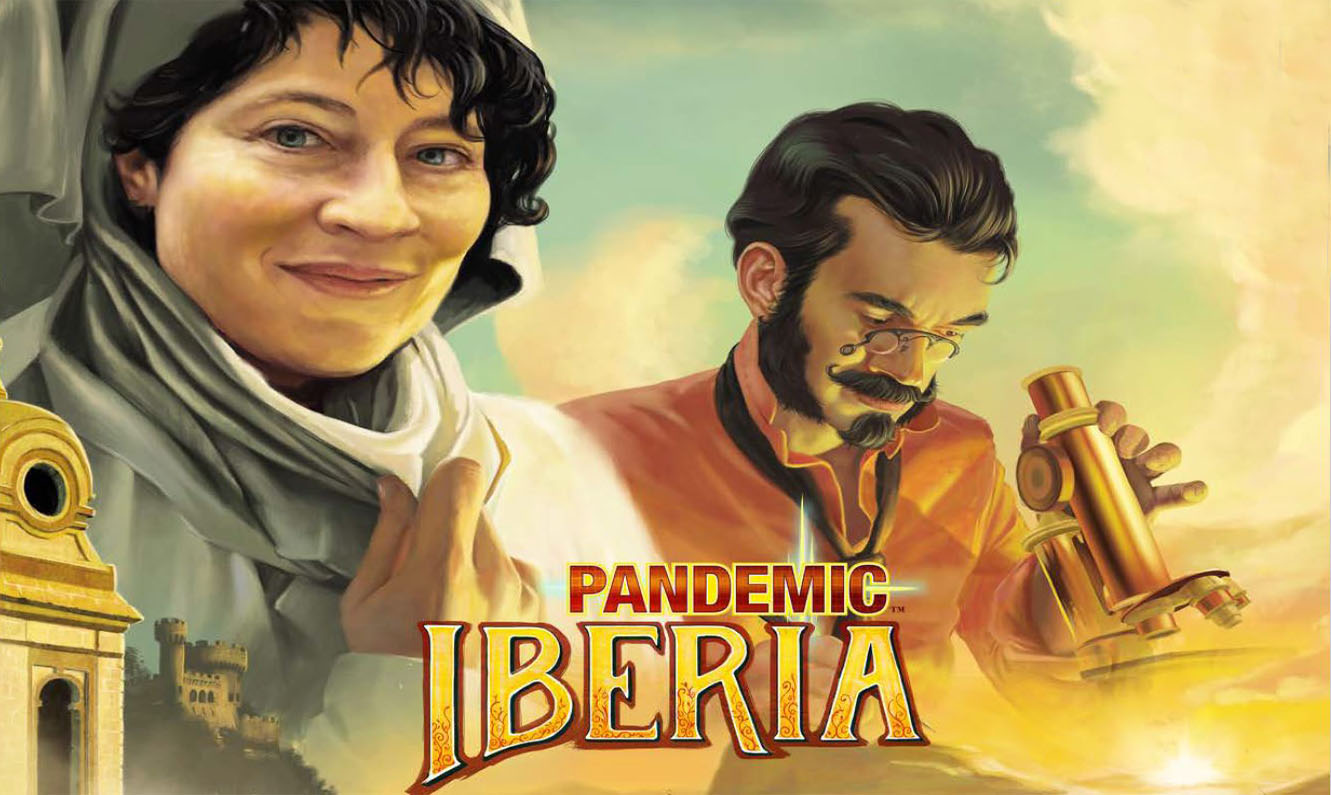
Pandemic Iberia is a cooperative game. The players all win or lose together.
The goal is to research all 4 diseases. The players lose if:
- 8 outbreaks occur (a massive panic occurs),
- not enough disease cubes are left when needed (a disease spreads too much), or
- not enough player cards are left when needed (your team runs out of time).
Each player has a specific role with special abilities to improve the team's chances.
Components
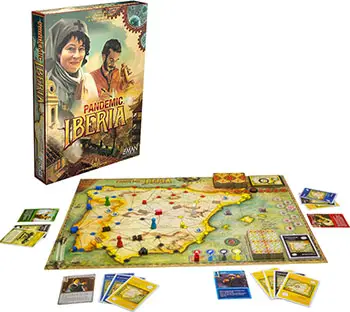
- 7 Pawns and 7 Role cards
- 69 Player cards
- 4 Hospitals
- 1 Outbreaks marker
- 96 Disease cubes
- 4 Research markers
- 48 Infection cards
- 4 Disease cards
- 1 Infection rate marker
- 1 Board
- 14 Purification tokens
- 20 Railroad tokens
- 1 Prevention token
- 5 Reference cards
- Instructions
Setup
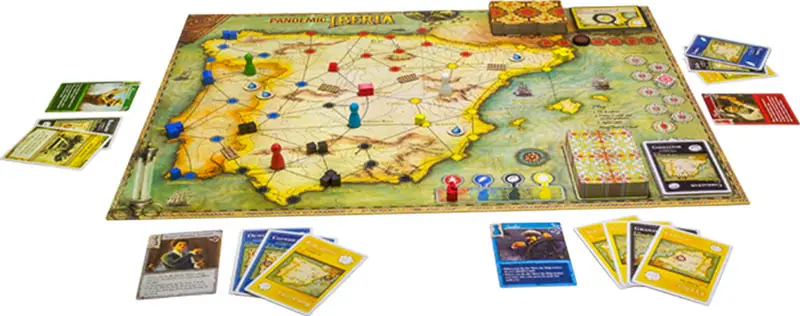
-
Set out the Board and Pieces
Place the board within easy reach of all players. Put the 4 hospitals, 20 railroad tokens, and 14 purification tokens nearby. Separate the cubes by color into 4 supply piles.
-
Place Outbreaks and Research Markers
Place the outbreaks marker on the "0" space of the Outbreaks Track. Place the 4 research markers near the Researched Disease Indicators
-
Place Infection Rate Marker and Infect 9 Cities
Place the infection rate marker on the left-most "2" space of the Infection Rate Track. Shuffle the Infection cards. • Reveal 3 of them. Put 3 disease cubes of the matching color on each of these cities.
- Reveal 3 more cards: put 2 disease cubes on each of these cities.
- Reveal 3 more cards: put 1 disease cube on each of these cities. (You will place a total of 18 disease cubes, each matching the color of the city).
Place these 9 cards face up on the Infection Discard Pile. The other Infection cards form the Infection Deck.
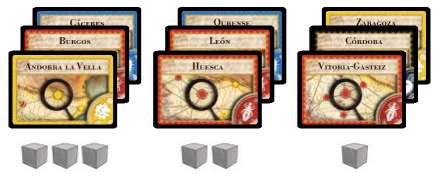
Use disease cubes matching the card colors.
-
Give each player a role card, a pawn, and a reference card
Give each player a reference card. Shuffle the Role cards and deal 1 face up in front of each player along with the matching pawn. Remove the remaining Role cards and pawns from the game.
-
Prepare the events and give cards to each player
Take the Epidemic cards out of the Player Deck and set them aside until Step 6.
Shuffle all the Event cards and randomly set aside the number of Event cards shown in the table below.
Add these Event cards to the City cards and return the remaining Event cards to the box without looking at them.
Shuffle the Player cards (City and Event cards). Deal cards to the players to form their starting hands. Give cards according to the number of players:
# of players Events in Deck Starting Hand 2- player game 4 4 3- player game 5 3 4- player game 6 2 5- player game 8 2 Each player looks at the City cards in their hand and selects one of the cities pictured on their cards to place their pawn. If a player doesn't have a City card ( for example if all of their cards are Event cards), they may start their pawn in any city on the board. Players keep their cards face up on the table.
-
Prepare the Player Deck
Set the game's difficulty level, by using either 4, 5, or 6 Epidemic cards, for an Introductory, Standard, or Heroic game. Remove any unused Epidemic cards from the game.
Divide the remaining Player cards into face down piles, as equal in size as you can, so that the number of piles matches the number of Epidemic cards you are using.
Shuffle 1 Epidemic card into each pile, face down. Stack these piles to form the Player Deck, placing smaller piles on the bottom.
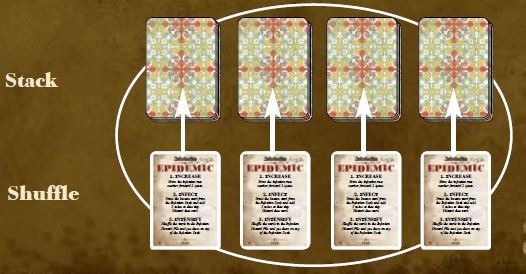
-
Begin Play
The players look at the City cards they have in their hand. The player who has the City card with the earliest founding date goes first.
Note: The City cards include their approximate founding dates. (Note that humans settled these locations thousands of years ago, before the cities were named).
Game Play
Each player turn is divided into 3 steps:
- Do 4 actions.
- Draw 2 Player cards.
- Infect cities
After a player is done infecting cities, the player on their left goes next.
Players should freely give each other advice. However, the player whose turn it is decides what to do.
Your hand can hold City and Event cards. City cards are used in some actions and Event cards can be played at any time.
Actions
You may do up to 4 actions each turn.
Select any combination of the actions listed below. You may do the same action several times, each time counting as 1 action. Your role's special abilities may change how an action is done. Some actions involve discarding a card from your hand; all these discards go to the Player Discard Pile.
A. Movement Actions

Move By Carriage / Boat
Move to a city connected by a brown line to the one you are in.

Move By Train
Move to a city connected by a continuous chain of railroad tokens.

Move By Ship
Move between two port cities by discarding a City card matching the color of your destination.
B. Other Actions

Build Railroad
Put a railroad token on a line coming out of your current city. (Not possible on dashed lines). Railway tokens cannot be placed on the dashed lines coming out of Andorra la Vella, Palma de Mallorca, or Gibraltar.
Players may Move by Carriage/Boat along those dashed lines, however. If there aren't any railroad tokens remaining in the supply, players cannot do this action.

Build a Hospital
Discard the City card that matches your current city to build a hospital there. The hospital you build must match the color of your city.
Take it from the pile next to the board. If the hospital of that color is already on the board, move it from its current location to your city.

Treat Disease
Remove 1 disease cube from the city you are in, placing it in the cube supply next to the board.

Share Knowledge
You can do this action in two ways:
- give the City card that matches the city you are in to another player, or
- take the City card that matches the city you are in from another player.
The other player must also be in the city with you. Both of you need to agree to do this.
If the player who gets the card now has more than 7 cards, that player must immediately discard a card or play an Event card.

Research a Disease
While at a city with a hospital, discard 5 City cards matching the color of the hospital from your hand to research the disease of that color . Move the disease's research marker on the board to indicate that it has been successfully researched.
Note: Unlike regular Pandemic, you never discover the cures for diseases in Pandemic Iberia. Instead, you research how to help prevent their spread.
When a disease is researched, its cubes remain on the board and new cubes can still be placed during epidemics or infections.
However, cards matching the color of the researched disease may now be used to Purify Water in any adjacent region, and you are closer to winning the game.

Purify Water
You can do this action two different ways to add 2 purification tokens into an adjacent region:
discard a City card matching the color of a city in an adjacent region to put the 2 tokens into that region, or
discard a City card matching the color of a researched disease to put the 2 tokens in any one adjacent region.
Each purification token prevents the addition of one disease cube into a city adjacent to the region that contains it. If there aren't any purification tokens remaining in the supply, players cannot do this action.
Regions are the areas of the board enclosed by the brown lines. For example, the area enclosed by the lines between Huesca, Andorra la Vila, Girona, Barcelona, and Zaragoza is a 'region. Each 'region, may contain any number of purification tokens.
Note that the sea area enclosed between Barcelona, Tarragona, Valencia, and Palma de Mallorca is also a region.
Draw Cards
After doing 4 actions, draw the top 2 cards together from the Player Deck.
If, as you are about to draw, there are fewer than 2 cards left in the Player Deck, the game ends and your team has lost! (Do not reshuffle the discards to form a new deck).
Epidemic Cards
If your draws include any Epidemic cards, immediately do the following steps in order:
-
Increase: Move the infection rate marker forward 1 space on the Infection Rate Track.
-
Infect: Draw the bottom card from the Infection Deck. Put 3 disease cubes of that color on the named city. If the city already has cubes of this color, do not add 3 cubes to it.
Instead, add just enough cubes so that it has 3 cubes of this color and then an outbreak of this disease occurs in the city (see Outbreaks below). Each purification token prevents the addition of 1 cube. Discard this card to the Infection Discard Pile.

If you cannot place the number of cubes actually needed on the board, because there are not enough cubes of the needed color left in the supply, the game ends and your team has lost! This can occur during an epidemic, an outbreak, or infections.
-
Intensify: Reshuffle just the cards in the Infection Discard Pile and place them on top of the Infection Deck.
When doing these steps, remember to draw from the bottom of the Infection Deck and to then reshuffle only the Infection Discard Pile, placing it on top of the existing Infection Deck.
It is rare but possible to draw 2 Epidemic cards at once. In this case, do all three steps above once and then again.
In this case, the second epidemic's Infection card will be the only card to "reshuffle", ending on top of the Infection Deck. An outbreak will then occur in this city during Infections, unless an Event card is played to prevent this.
After resolving any Epidemic cards, remove them from the game. Do not draw replacement cards for them.
Hand Limit
If you ever have more than 7 cards in hand (after first resolving any Epidemic cards you may have drawn), discard cards or play Event cards until you have 7 cards in hand.
Infections
Flip over as many Infection cards from the top of the Infection Deck as the current infection rate. This number is below the space of the Infection Rate Track that has the infection rate marker. Flip these cards over one at a time, infecting the city named on each card.
To infect a city, place 1 disease cube matching its color onto the city. If there is a purification token in a region adjacent to the city, however, remove 1 purification token from an adjacent region (returning it to the supply) instead of placing a cube. (If there is more than one adjacent region with a purification token, the current player decides which token to remove).
If the city already has 3 cubes of this color, do not place a 4th cube. Instead, an outbreak of this disease occurs in the city. Discard this card to the Infection Discard Pile
Outbreaks
When a disease outbreak occurs, move the outbreaks marker forward 1 space on the Outbreaks Track. Then, place 1 cube of the disease color on every city connected to the city (or remove a purification token if any).
If any of them already has 3 cubes of the disease color, do not place a 4th cube in those cities. Instead, in each of them, a chain reaction outbreak occurs after the current outbreak is done.
When a chain reaction outbreak occurs, first move the outbreaks marker forward 1 space. Then, place cubes as above, except do not add a cube to cities that have already had an outbreak (or a chain reaction outbreak) as part of resolving the current Infection card.
As a result of outbreaks, a city may have disease cubes of multiple colors on it; up to 3 cubes of each color.

If the outbreaks marker reaches the last space of the Outbreaks Track, the game ends and your team has lost!
Turn End
After infecting cities and discarding Infection cards, your turn is over. The player on your left begins a turn.
Event Cards
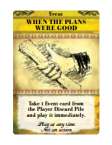
During a turn, any player may play Event cards. Playing an Event card is not an action. The player who plays an Event card decides how it is used.
Event cards can be played at any time, except in between drawing and resolving a card.
When 2 Epidemic cards are drawn together, events can be played after resolving the first epidemic.
After playing an Event card, discard it to the Player Discard Pile.
Player Cards
Place your cards face up in front of you, for all players to see. Only Player cards count towards your hand limit. Your Role and your Reference cards are not part of your hand. Players may freely examine either discard pile at any time.
End of the Game
The players win as soon all 4 diseases have been researched.
Once all diseases have been researched, the game ends and players win immediately, no matter how many cubes are on the board.
There are 3 ways for the game to end and the players to lose:
- if the outbreaks marker reaches the last space of the Outbreaks Track,
- if you are unable to place the number of disease cubes actually needed on the board, or
- if a player cannot draw 2 Player cards after doing their actions.
Influx of Patients Challenge
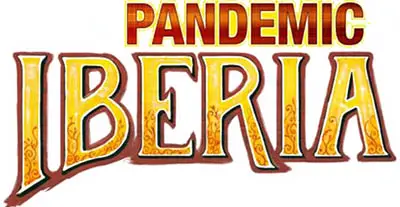
This challenge simulates the rush of patients into the new, fledgling hospitals in the 19th Century Iberian Peninsula. In this period, hospitals were built for the treatment of specific diseases, and people tried to reach these cities in order to receive it.
Setup
Use the setup rules for the base game with the following changes:
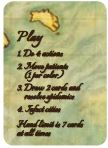
Add the Influx of Patients Challenge reference card over the Play section of the board. This shows the new order of play, and will help you remember to take the new "Move patients " step each turn.
Only 6 purification tokens are available in the supply for use at the beginning of the game. Divide the remaining 8 purification tokens into 4 stacks of 2 tokens, placing a hospital on each stack.
Game Play
Building Hospitals
Building a hospital now has additional benefits. Whenever you build a hospital, after placing the hospital onto the board, do the following:
Put the 2 purification tokens that were underneath the hospital into the supply. They are now available for use.
Remove the disease cubes (matching the color of the hospital, if any) from the city where you built the hospital and return them into the supply.
The downside to building hospitals, however, is that players must now move one disease cube (referred to as a "patient" from now on) toward each hospital each turn. This means that the hospitals can quickly become overrun with patients.
Move patients after doing actions, but before drawing Player cards, according to this new order of play:
- Do 4 actions
- Move patients (1 per color)
- Draw 2 Player cards
- Draw Infection cards
Moving Patients
During step 2, for each hospital, move the closest patient (i.e., disease cube) matching the color of the hospital 1 step toward it.
When counting distance to determine the closest patient, count line segments but ignore the railroad tokens. If there are 2 or more patients the same distance away, you may choose the patient to move from the closest patients.
When moving, patients will move the fastest way they can - which means they will take use railroads if it's the fastest means to reach the hospital. If there are 2 or more routes that take the same amount of time, you may choose the route the patient takes from the fastest routes. Moving patients are not affected by purification tokens or the Nurse's prevention token.
If moving a patient causes a city with a hospital to have 4 disease cubes of the same color, it is overrun.
If an outbreak happens in a city containing a hospital (by an Infection or Epidemic card) place the 4th disease cube into the city (a 5th or 6th cube of the same color are never placed), then follow the rules for Overrun Hospitals.
Overrun Hospitals
If a city with a hospital ever has 4 or more patients of the same color in it, the hospital is overrun and everyone flees the city. Instead of doing a normal outbreak when this happens, move every patient of that color in the city into adjacent cities. Players may decide which cities the cubes are moved to.
In some cases this may result in one or more outbreaks.
When this happens, resolve the outbreaks normally. After moving cubes out of the city with the overrun hospital, mark an outbreak on the Outbreaks track.
Historical Diseases Challenge Background
In this challenge you must fight as an experienced team against even more powerful diseases. Each disease will now appear with a different, terrible behavior: more dangerous outbreaks, more rapid infection, harder to treat… City life was not so easy in the 19th Century!
Although many diseases devastated the world during 19th Century, only four of these dangerous enemies appear in this game. At the time, humanity began to learn how the diseases originated, how to fight them, and how to prevent them.
And although these diseases have now been eliminated from much of the developed world, millions of people continue to suffer from them.
Setup
Shuffle the Disease cards and randomly select one, two, three, or four of them to play with. The more you select, the harder your game will be.
(You might want to start with just one and gradually add more in future games as you get better at the game). Place the cards you've randomly selected to the side of the board and the others back into the box.
Game Play
Play as usual, but note the special effects of the historical diseases that are now in play:
-
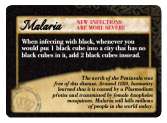
Black - Malaria
When infecting with black, whenever you would put 1 black cube into a city that has no black cubes in it, add 2 black cubes instead.
-
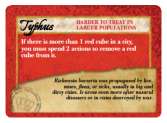
Red - Typhus
If there is more than 1 red cube in a city, you must spend 2 actions to remove a red cube from it.
-
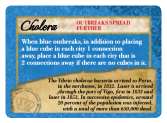
Blue - Cholera
When blue outbreaks, in addition to placing a blue cube in each city 1 connection away, place a blue cube in each city that is 2 connections away if there are no cubes (of any color) in it.
-
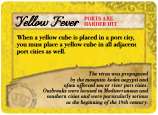
Yellow - Yellow Fever
When a yellow cube is placed in a port city, you must place yellow a cube in all adjacent port cities as well.
Historical Informations
Events
-
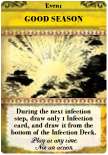
Good Season
Epidemics and new disease outbreaks have decimated populations over the course of human history. Many terrible diseases have been controlled or even eradicated from some regions thanks to advances in science.
-
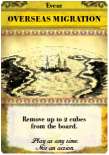
Overseas Migration
In the last decade of the 19th century, Spain controlled some overseas territories: Islas Canarias, Ceuta, Melilla, Cuba, Puerto Rico, Filipinas, Guinea and Sahara Español, among others. Portugal had territories in Açores, Madeira, Africa, Índia Portuguesa (Goa, Damão), Macao, and Timor-Leste, among others.
In the Peninsula, there was also a third but small country named Andorra, and a British colony, the City of Gibraltar.
-
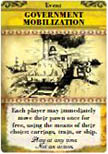
Government Mobilization
The Royal Philanthropic Expedition was led by Doctor Francisco Javier de Balmis, a deputy surgeon, 3 nurses, 2 first-aid practitioners, 2 assistants, a rectoress, and 22 orphan boys.
-
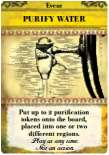
Purify Water
Asepsis-having clean food, water, and medical instruments-was one of the most important discoveries for fighting diseases and a powerful tool against infections.
-
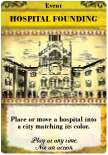
Hospital Founding
There were specialized hospitals for every kind of illness. Sick people would move to a city for its hospital, although their capacity for curing them was very limited.
-
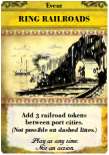
Ring Railroads
In 1855, the General Law of Railroads was the first plan to build a national train network, using a characteristically wider railroad than the rest of the European countries. In Portugal, the main railroad network was built from 1856 to 1890.
-
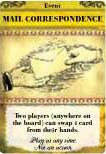
Mail Correspondence
The postal mail business is as old as the Roman age. The first Spanish stamps were launched on January 1, 1850. In Portugal, stamps were approved two years later and started to be used in 1853.
-
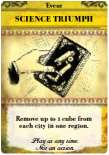
Science Triumph
Humanity started to win against diseases thanks to many scientific and medical discoveries, mainly asepsis and the microbiologic origin of infectious diseases
-
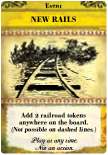
New Rails
The first railroad and train travel in the Iberian Peninsula was from Barcelona to Mataro, inaugurated on October 28, 1848 (The first one in Spain was in Cuba in 1837). The first Portuguese railroad, from Lisboa to Carregado, was inaugurated on October 28, 1856.
-
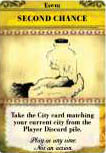
Second Chance
Different diseases struck cities one after another, or at the same time. As modern medicine advanced, so did life expectancy
-
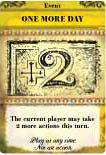
One More Day
Researchers and scientists dedicated many efforts to fight against diseases. The main scientific institutions were universities and royal academic centers. When the first plans for public education started, around 90% of the adult population was illiterate.
-
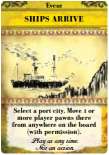
Ships Arrive
Until the end of the 19th century, ships and boats were the fastest long-distance transports and the main way to move resources.
-
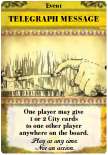
Telegraph Message
The first telegraph message in Spain, from Madrid to Irun, was a speech Queen Isabel II gave to inaugurate a new congress period on November 8, 1854. The public service of telegrams started on February 25, 1855. In 1855, a submarine line connected Lisboa to Azores Islands. Portuguese public service of telegrams started in 1857.
-
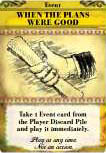
When the Plans Were Good
The Royal Philanthropic Expedition was a medical mission from 1803 to 1806. Its objective was to bring a smallpox vaccine to the overseas Spanish lands, carried inside the blood of 22 orphan boys. It was the first healthcare expedition in World history.
-
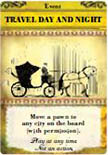
Travel Day and Night
The main way of transport, before the train age, was carriages and coaches.
Diseases
Cholera

The Vibrio cholerae bacteria arrived to Porto, in the northwest, in 1832. Later it arrived through the port of Vigo, first in 1833 and later in 1853.
In successive epidemics, around 20 percent of the population was infected, with a total of more than 650,000 dead.
Typhus

Rickettsia bacteria was propagated by lice, mites, fleas, or ticks, usually in big and dirty cities.
It arose even more after natural disasters or in cities destroyed by war.
Malaria

The north of the Peninsula was free of this disease. Around 1880, humanity learned that it is caused by a Plasmodium protist and transmitted by female Anopheles mosquitoes.
Malaria still kills millions of people in the world today.
Yellow Fever
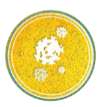
The virus was propagated by the mosquito Aedes aegypti and often affected sea or river port cities.
Outbreaks were located in Mediterranean and southern cities and were particularly serious at the beginning of the 19th century.
Roles
Each player has a role with special abilities to improve your team's chances.
-
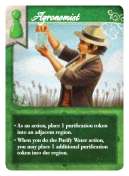
Agronomist
Spend an action to place a purification token into an adjacent region.
When doing the Purify Water action, you may place 1 additional purification token into the region.
-
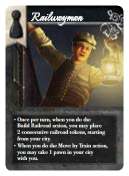
Railwayman
Once per turn, when you do the Build Railroad action, you may place two consecutive railroad tokens starting from your current city.
When you Move by Train, you make take one passenger (a pawn in your city) with you
-

Politician
Spend an action to give a City card to another player in any City. You must be in the city matching the card that is passed.
Spend an action to swap a City card in your hand with a City card in the discard pile. You must be in a city matching one of the cards that is swapped.
-
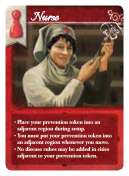
Nurse
Your role comes with a prevention token. Put your prevention token into a region adjacent to your city during setup. Cities adjacent to your prevention token cannot be infected.
Your prevention token always travels with you. Whenever you (or anyone else) moves your pawn for any reason, immediately put your prevention token into a region adjacent to your pawn.
-
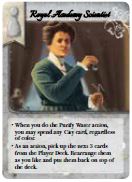
Royal Academy Scientist
When you do the Purify Water action, you may play any City card, regardless of color.
Spend an action to pick up the next 3 Player cards. Rearrange them as you like, then place them back on top of the Player Deck.
-

Rural Doctor
When you do the Treat Disease action, remove one cube from your city, and one additional cube from your city or from a different city in an adjacent region.
-
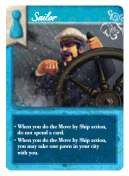
Sailor
When you Move by Ship, do not spend a card.
When you Move by Ship you may take one passenger (a pawn in your city) with you.
Fine Points and Reminders
If a disease has been researched, you still only remove 1 cube when you do the Treat Disease action.
You may use cards matching the color of a researched disease to do the Purify Water action in an adjacent region . You do not draw a replacement card after drawing an Epidemic card.
On your turn, you may take a card from another player, if you are both in the city that matches the taken card.
Your hand limit applies at all times, including after you receive a card from another player.
Continue Reading


